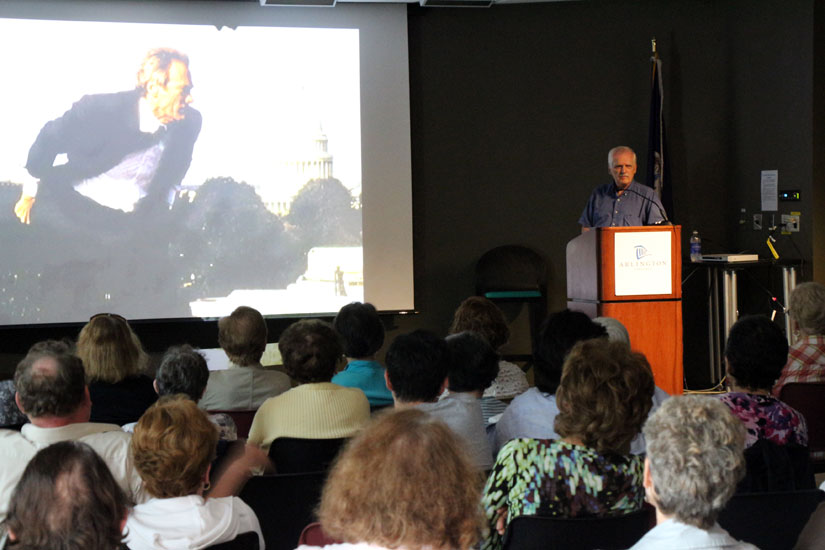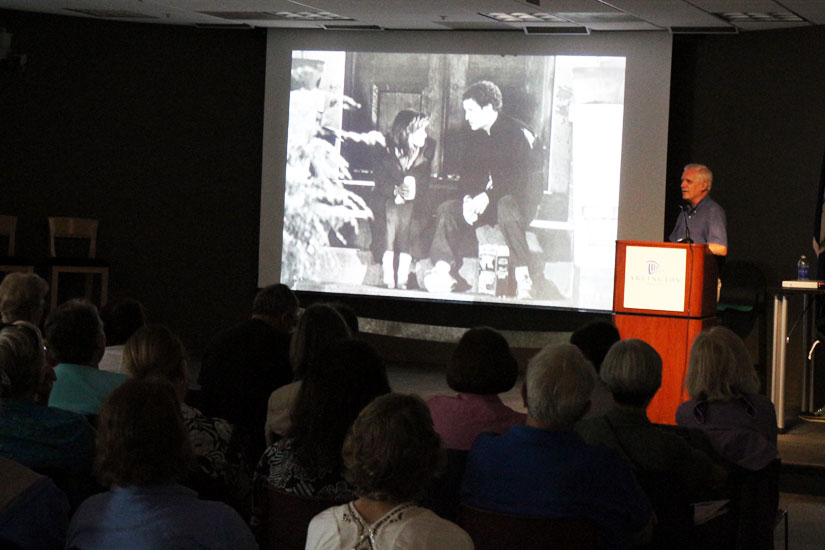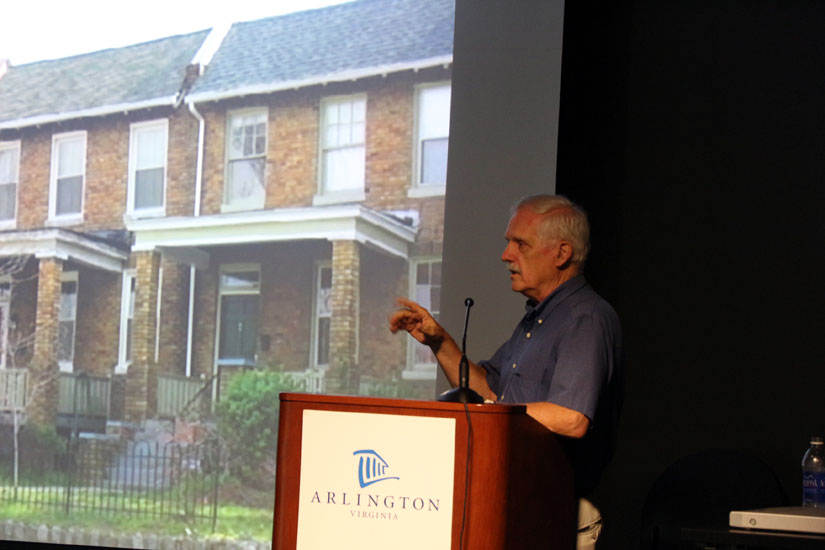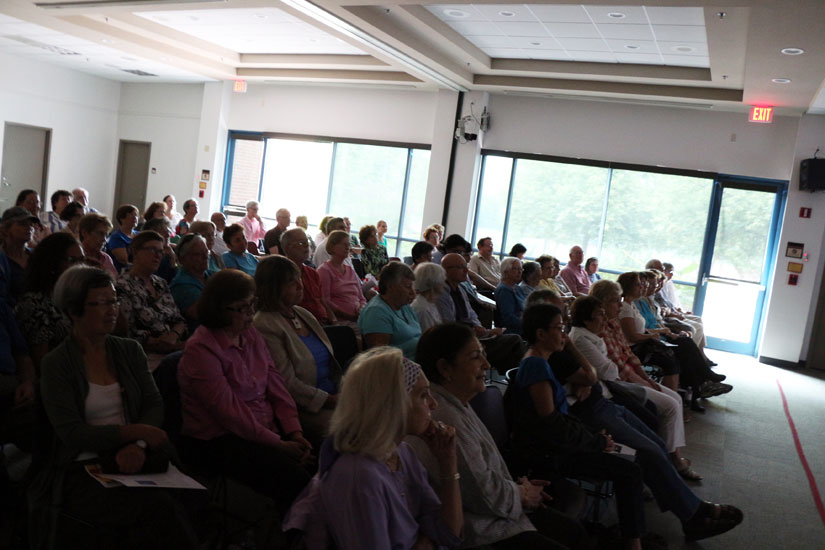Washington, D.C., likes to call itself the most powerful city in the world, but films based in D.C. have a knack for missing some basic information that would make locals chuckle. Those omissions made for a lively talk at the Arlington Central Library on Monday afternoon.
Author Mike Canning released the book “Hollywood on the Potomac” last year. It’s a comprehensive guide to how the film industry has treated D.C. as a subject, character and background since the time when moving pictures with sound were called “talkies.”
During his talk on Monday, Canning showed clips from several films that are based in D.C., from Frank Capra and Jimmy Stewart’s “Mr. Smith Goes To Washington” to Leonardo DiCaprio’s “J. Edgar.”
No film crew has ever been allowed to shoot inside the Senate or the House of Representatives, Canning said, but the closest approximation came in “Mr. Smith,” for which Capra and his crew spent days in the Senate building, taking measurements and photos of the hall.
“It took $100,000 and six months to build,” Canning said of the 1939 film’s iconic set. It’s still the finest approximation of Congress in a movie, Canning said.
He compared it to 2000’s “The Contender,” in which Jeff Bridges, who plays the president, calls a joint session of Congress in a scene filmed in Richmond’s General Assembly building.
The biggest “goof,” as Canning calls them, in a D.C. movie came in 1987’s “No Way Out.” Kevin Costner, playing a Naval officer, is running away from two men in suits. He jumps off the Whitehurst Freeway and finds himself running along the C&O canal in the heart of Georgetown, when he takes an abrupt left turn and enters a Metro stop. The nearly 100 people in the audience burst out laughing watching a film so gravely misrepresent the area’s public transit system.
Despite the Metro stop mistake, Canning insists the rest of the film is worth watching. Arlington residents may get a kick out of the opening scene, which pans out from the Pentagon and shows Pentagon City as it was in the mid-1980s: small houses surrounded by forest.





